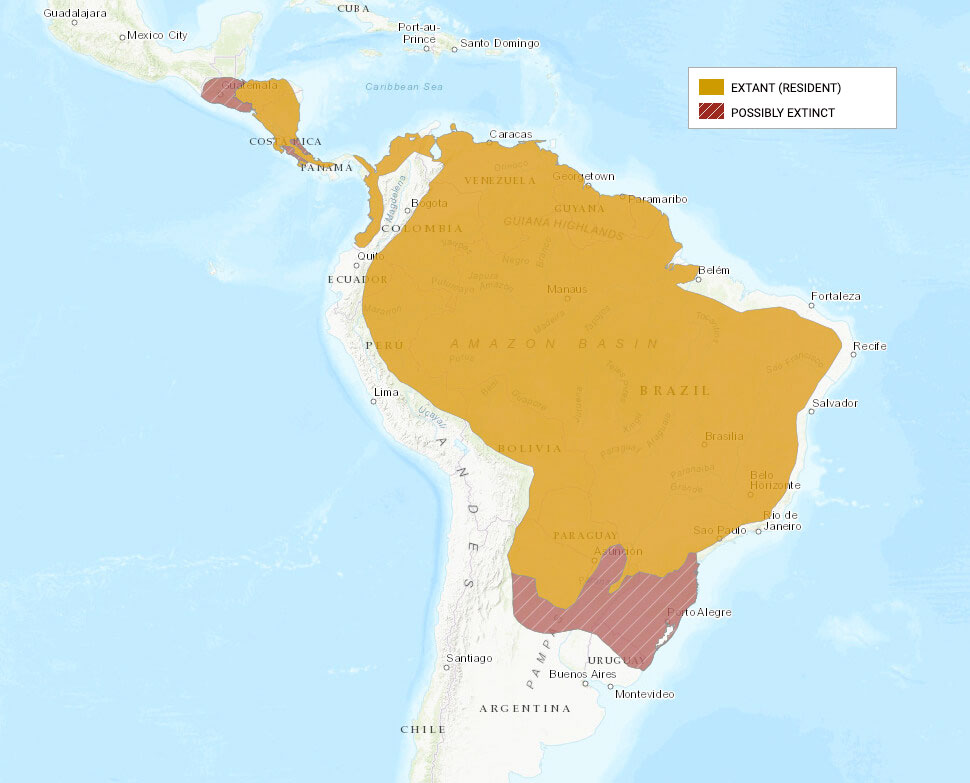This post will be the last one before the themed finale. So like any good blogger, I am going to use this last opportunity to vent a personal, potentially controversial grievance. I think Giant Anteaters are functionally cool, but I also believe that they are weird and disgusting to look at.

Betsy the anteater from the Chattanooga Zoo. Image Source.
Meet Myrmecophaga tridactyla, known as the Giant Anteater. Native to parts of Central and South America, the Giant Anteater is just one of four species of anteaters. This is the species that people think of when they say anteater, so I will refer to the species as just “anteater” in this post. They can grow 6-8 feet long from nose to tail, and can weigh up to 100 pounds. Appearance is the same for males and females. They have distinct black, brown, and white colorations on their bristle-like fur. Anteaters have claws on their front feet that serve a variety of purposes, like defense, eating, and climbing. As they walk, they tuck their front claws in and shuffle around on their knuckles. Despite this, they are excellent swimmers and can run surprisingly fast (up to about 30 miles per hour). A different species of anteater recently escaped from a zoo in Taiwan, highlighting the agility and mobility of anteaters as a whole.
Their name gives away their diet. Anteaters rely upon an acute sense of smell to find anthills and termite mounds. They use their long front claws to rip open the mounds, exposing the snacks inside. Using their specialized tongues, they quickly eat many of the ants or termites before moving on. Anteaters always leave some of the ants or termites alive so that they can come back to the same source later.

Giant Anteater range. Image Source.
Anteaters are preyed upon primarily by big cats like pumas and jaguars. Unfortunately, this is not the anteater’s biggest challenge for survival. Humans, like with all threatened animals, play a massive role in the decline of the anteater. As can be seen in the map above, anteaters have been eliminated in parts of their range. Habitat loss in particular plays a large factor. Land clearance for ranches, logging, farms, and settlements destroys the natural landscapes that anteaters call home. Wildfires, increasing in size and intensity due to climate change, also decimate anteater habitats. People sometimes hunt the anteater for meat or because they are considered pests. They are also often killed by domesticated dogs or by vehicles. All of these factors, combined with their low reproductive efficiency and highly specific food source, have led the IUCN to classify the Giant Anteater as decreasing and vulnerable.
Image Source.
The rationale of why I dislike anteaters so strongly is more of a feeling than a coherent argument. Their whole “anteater vibe” is unsettling. The bristle hairs and color patterns are gross to me. The way they walk on their fists is weird and their long faces and tongues are unnatural. While their ecological niche is very interesting and their mechanics are cool, I just plainly do not like them. I hope that the overview of anteaters was educational and that my hot take was stirring for readers who find themselves more sympathetic to this particular threatened species.
Cover Image Source.

Supriya Kumar November 9, 2020
I have to disagree again here, I think they are cute! Also, I have a lot of respect for anteaters because of how historic they are.
It’s very sad to think about how many species are endangered and reaching extinction. It’s easy to forget how diverse Earth is as we go about every day doing our silly little tasks.
kab7088 November 9, 2020
Anteaters seem very weird to me not only by their appearance but also by how they get around by shuffling on their knuckles. I did think it was interesting to know that the agility and mobility of anteaters were discovered through an escape that took place of a similar species in Taiwan.